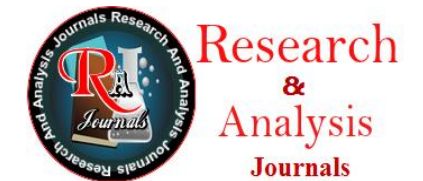The Influence of Internal Debt on Trade Balance and International Policy Objectives: A Conceptual Perspective
Downloads
This paper explores the intricate relationship between internal debt, trade balance, and international policy objectives, providing a conceptual perspective on how these elements interact within the broader economic framework. Internal debt, defined as the borrowing undertaken by governments from domestic sources, plays a pivotal role in shaping economic conditions and policy outcomes. The study examines how variations in internal debt levels can influence a nation's trade balance through mechanisms such as currency valuation, interest rates, and inflation. Furthermore, it highlights the implications of internal debt for achieving both internal policy objectives, such as economic stability and growth, and external objectives, including attracting foreign investment and maintaining a favorable international standing. By analyzing these dynamics, the paper underscores the importance of effective debt management strategies that align with sustainable economic practices. Ultimately, this conceptual framework aims to inform policymakers about the critical balance required between leveraging internal debt for development and ensuring long-term economic stability and competitiveness in the global market.
Annisa, N. & Taher, A. R. Y. (2022). The The Effect of Foreign Debt, Labor Force, and Net Exports on Indonesia's Economic Growth in Period of 1986 Q1-2020 Q4. Jagaditha. [HTML]
Caselli, F. & Reynaud, J. (2020). Do fiscal rules cause better fiscal balances? A new instrumental variable strategy. European Journal of Political Economy. imf.org
Chaudhary, R., Bakhshi, P., & Gupta, H. (2020). Volatility in international stock markets: An empirical study during COVID-19. Journal of Risk and Financial Management, 13(9), 208. mdpi.com
Dey, S. R., & Tareque, M. (2020). External debt and growth: role of stable macroeconomic policies. Journal of Economics, Finance and Administrative Science, 25(50), 185-204. emerald.com
Mamun, A., Akça, E. E., & Bal, H. (2021). The impact of currency misalignment on trade balance of emerging market economies. Organizations and Markets in Emerging Economies, 12(2), 285-304. redalyc.org
Mesagan, E. P., Alimi, O. Y., & Vo, X. V. (2022). The asymmetric effects of exchange rate on trade balance and output growth. The Journal of Economic Asymmetries. [HTML]
Mohsin, M., Ullah, H., Iqbal, N., Iqbal, W., & Taghizadeh-Hesary, F. (2021). How external debt led to economic growth in South Asia: A policy perspective analysis from quantile regression. Economic Analysis and Policy, 72, 423-437. researchgate.net


